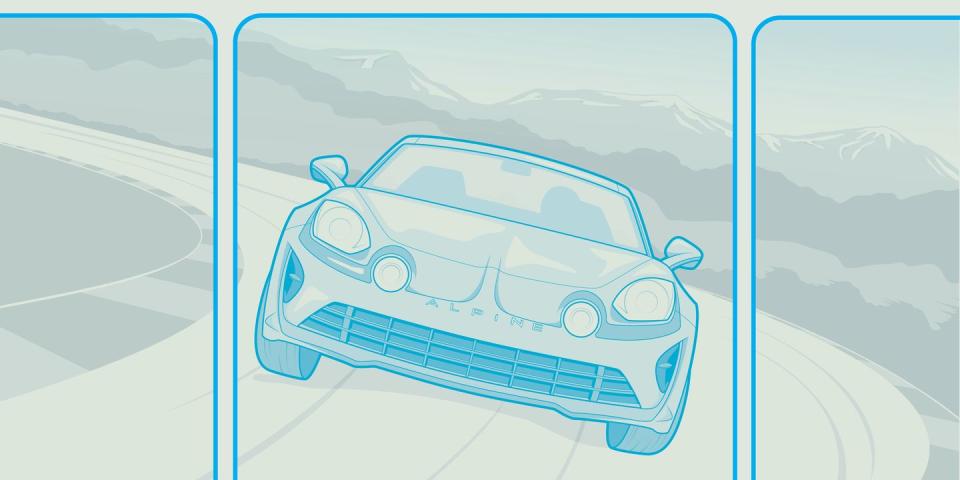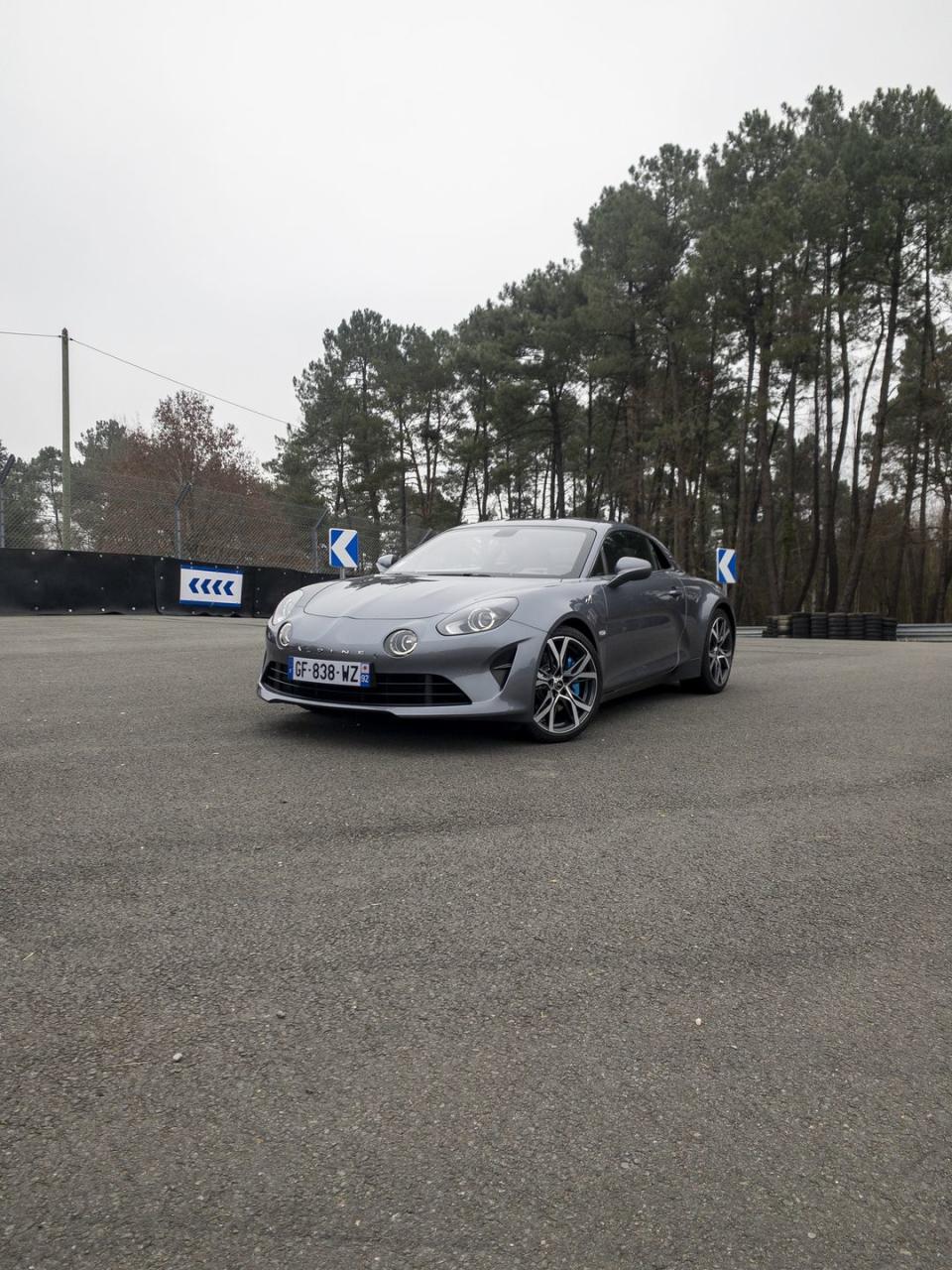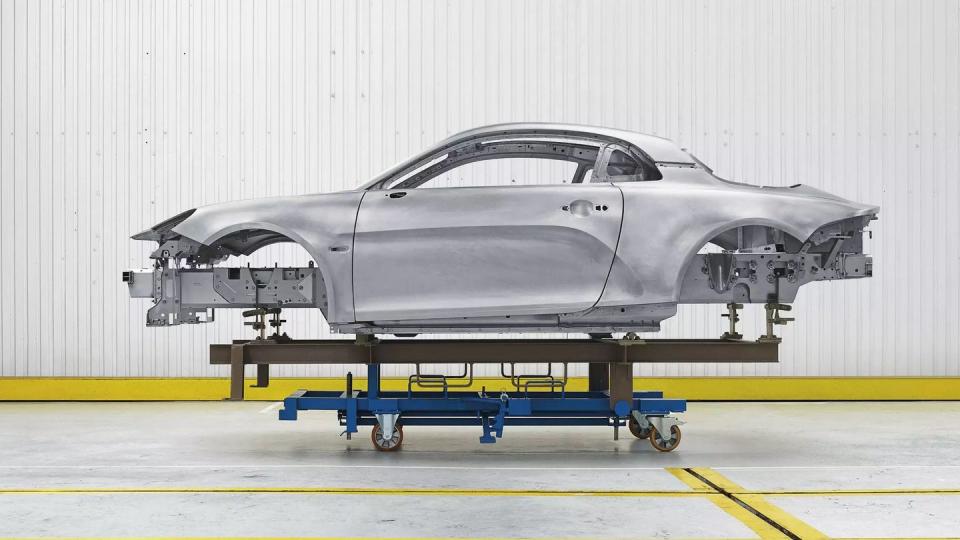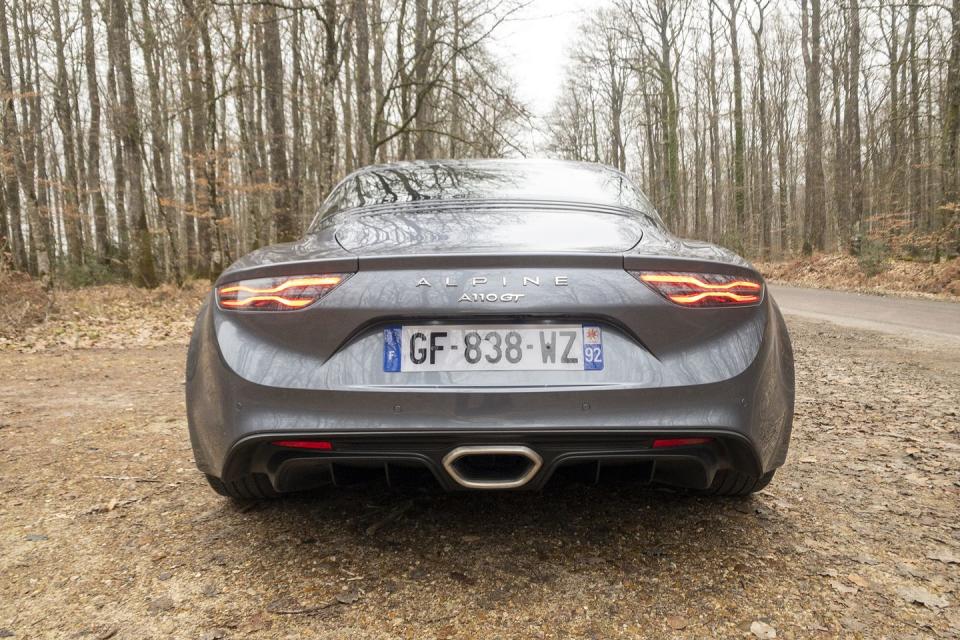The Alpine A110's Engineering Genius

Believe the hype. The Alpine A110 is a revelation, one of the finest sports cars ever made. And that wasn’t by accident.
This iteration of A110 has been around for some time now, previewed in concept form back in early 2016 and in production within the same year. It's a modern tribute to the original A110, a rear-engine sports car created by French firm Alpine in 1963. Renault supplied engines to Alpine and took over the company in 1973, making it an in-house sports-car brand. Alpine disappeared in 1995, until Renault under the auspices of Carlos Tavares—now CEO of Stellantis—decided to revive the brand as something of a Porsche competitor.

Tavares pitched the A110 revival when Carlos Ghosn still ran the Renault-Nissan Alliance. Ghosn greenlit the project, and told the team it had to be affordable. Sure, Renault-Nissan were (and are) two huge companies, but sports cars are a low-margin, low-volume business, and that's why large multinational automakers don’t make sports cars. (In the case of Toyota, it makes sports cars with partners.) Renault partnered with Caterham to realize its sports-car dreams back in 2012, and though the tie-up fell through in 2014, the British firm did contribute significant cash and engineering resources to what became the A110. That didn’t mean cost was of no object to Alpine.
"We knew we didn't have a nameplate like Porsche and Ferrari,” says David Twohig, the chief engineer of the Alpine A110, now an author and consultant. “So, we knew there was a limited price we could ask for this vehicle. We didn't want to make a $150,000 sports car that either nobody would buy, or everyone would buy the obvious competitor, so we had to keep it accessible in all the senses of that word.”
This forced Twohig and the team behind the A110 to get creative with their money. They decided to lean on the might of the Renault-Nissan Alliance for major components like engine, transmission, switchgear, infotainment, climate control, and other parts, reducing costs. This freed up cash for the most important parts—the chassis and suspension.

Weight defined everything with the A110. “Your readers have probably heard this cliche before, but it's still true,” Twohig says. “It’s this virtuous circle where if you could save some mass off the central portion of the car, I can have smaller brakes, I can have lower spring rates... If I can bring down the wheel size, then I have less unsprung mass, and it gets sweeter again.” The result is a car that weighs a little over 2500 pounds in its heaviest form, about 600 pounds lighter than a Porsche Cayman. Sure, it’s heavier than the old Lotus Elise, but it’s a lot more daily drivable. The A110, by contrast, doesn't require acrobatics to get in.
I had the opportunity to spend a few days with an A110 GT on a trip to France, and that commitment to weight savings is always obvious. For starters, the car is tiny by modern standards, 7.8 inches shorter in length than a Cayman, though similar in height and width. Even in a country filled with cars much smaller than the average in America, the A110 is frequently dwarfed by hatchbacks and small crossovers.
It’s such an elegant car to drive, with ride quality that embarrasses a lot of luxury sedans. Even in urban traffic, the A110 feels immediately special, soaking up bumps and steering with delicacy that’s rare to find these days. It’s a car you fall in love with immediately. In my case, the love grew as kilometers piled on.

Much as I would’ve loved to get in the A110 and aim straight for the Col de Turini,I had to bring the car back to Renault in the suburbs of Paris, so Le Mans would have to do. Between Paris and Le Circuit de la Sarthe, you won’t find the most mind-blowing roads the world has to offer, but there’s no lack of narrow D-roads that flow gently through the wide expanses of farmland that defines northern France. The surface quality varies wildly and the prevalence of farms means dirt and mud on the road. Throw in the rain of late winter, and you have conditions that would challenge any car.
Any car except, apparently, the A110. “If we're on a dry track somewhere, you know on the West Coast, dry track, give me the keys to the Lotus all day long,” Twohig says. “The Alpine is— and we were very clear on this from day one–a road car. As we call it in Europe, a ‘B-road blaster’ or a ‘canyon car’ as my friends in California call it...it’s made for small roads, broken surfaces, wet roads, icy roads, it’s going to be with you.”
The D637 cutting across the southwestern most part of Normandy doesn’t look like much on Google Maps, but it is undoubtedly A110 territory. Even with wet, dirty tarmac underneath, blind, fast corners, and the frequent dips and crests, the Alpine carries astonishing speed here. It just gives the driver confidence to push and push. As Twohig says, the car is with you, a faithful companion for exuberant driving. There was one massive mid-corner bump that I only just saw as I was about to roll over it at speed. I braced myself for the worst, but the Alpine just moved up and down gracefully with the surface.

 Yahoo Autos
Yahoo Autos 